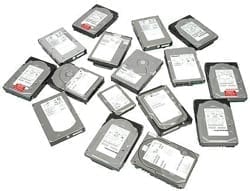 Last Tuesday, we told you about how flooding in Thailand may affect hard drive prices and availability. One week later, things aren’t looking so good.
Last Tuesday, we told you about how flooding in Thailand may affect hard drive prices and availability. One week later, things aren’t looking so good.
We mentioned that Western Digital’s Thailand plants are mostly underwater from the flooding. Those two plants produce about 60% of WD’s drives. Last quarter, WD produced about 54 million drives, which, extended outward, means there’s approximately 32,400,000 fewer drives being produced—and that’s just from Western Digital.
Unfortunately, they’re not the only ones affected.
You see, there’s another monkey wrench thrown into the works. If you recall, we also mentioned a company by the name of Nidec; they’re the folks who make the motors for nearly every hard drive manufacturer. Nimec is, unfortunately, also completely offline, meaning a critical component is no longer available to manufacturers. This has resulted in a severe shortage across the board of hard drives being produced, and since drive manufacturers generally run lean cycles, with very little left “in the pipeline” at any given time, the resulting shortage has been nearly immediate.
As a result, external drive manufacturers—including OWC—are going to have to place limits on drive purchases, simply to be sure there’s enough to go around. The scary part is that even with those measures in place, there may a large number of drive models that just aren’t available anywhere by the end of the year.
On the plus side, since they don’t require the same parts as platter-based drives, the SSD market hasn’t been affected yet. So if you’re looking at getting an SSD, now’s the time to do it, as the across-the-board increase in platter-based hard drive prices has made SSDs much more attractive in the short term.
However, you’ll want to act fast. As more OEMs and consumers start looking at SSDs versus the sharply rising-in-price platter-based drives, there’s no telling how NAND supplies may be affected. As a result, it’s unlikely SSD pricing will continue to drop. The more probable scenario will be that SSD prices will stabilize for the time being, with the possibility of actually increasing based on an increased demand.
Things could be more normal in as little as three weeks but the impact on prices will likely last through the rest of the year. The bottom line is that this is a nasty situation and we’re doing what we can to ensure inventory of all types of storage devices and price them competitively to prevailing market conditions.





